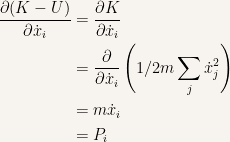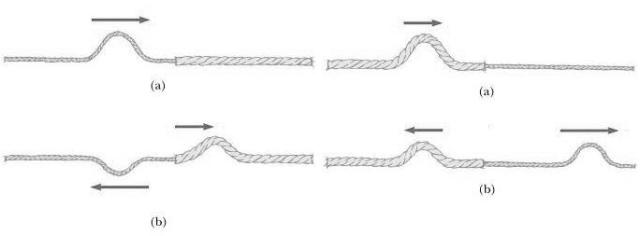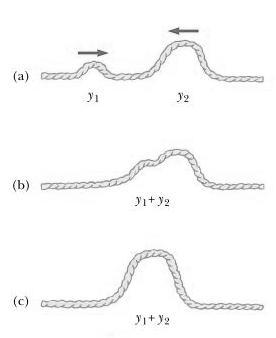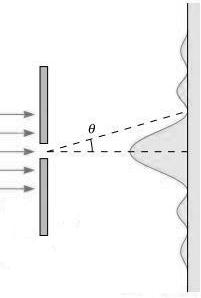— 7. Newton and Euler-Lagrange Equations —
We’ve seen in the previous examples that solving a problema while using the lagrangian formalism would lead us to the same equations of Newton’s formalism.
In this section we’ll show that both formulations are indeed equivalent for conservative systems.
We have  for
for  . The previous equation can be written in the following form:
. The previous equation can be written in the following form:

Since our analysis doesn’t depend on the type of coordinates one uses we’ll choose to use rectangular coordinates. Hence it is  and
and  . It is
. It is  and
and  . Hence
. Hence  . Since for a conservative system it is
. Since for a conservative system it is  it follows that
it follows that 
 Finally it is
Finally it is  which is Newton’s Second Axiom. Since the dynamics of a particle are a result of this axiom the dynamics of a given particle have to be the same on both formulations of mechanics.
which is Newton’s Second Axiom. Since the dynamics of a particle are a result of this axiom the dynamics of a given particle have to be the same on both formulations of mechanics.
— 8. Symmetry considerations —
As you certainly noticed in the previous examples the absence of generalized coordinate on the lagrangian of the system implied the conservation of a momentum (angular or linear). These coordinates that don’t appear on the lagrangian are called cyclic coordinates in the literature.
Obviously that the presence or absence of cyclical coordinates on a lagrangian depend on the choice of coordinate that one makes. But the fact that a moment is conserved cannot depend on the choice of the set of coordinates one makes.
Since the right choice of coordinates is linked to the symmetry that the system exhibits one can conclude that symmetry and conserved quantities are intrinsically connected.
In this section we’ll understand why symmetry considerations are so important in contemporary Physics and what is the relationship between symmetry and conservation. If a system exhibits some kind of continuous symmetry this symmetry will always manifest in the form some conserved quantity. The mathematical proof of this theorem (and its multiple generalizations) is Noether’s theorem and I won’t provide a proof of it here. Instead we’ll look into the consequences of three types of continuous symmetry and I’ll provide you links for you to study Noether’s theorem:
— 8.1. Continuous symmetry for time translations —
As we saw in Newtonian Mechanics 01 a frame is said to be inertial if time is homogeneous. When one says that time is homogeneous one is saying that one can perform a continuous time translation (formally one says  ) and the characteristics of the mechanical system won’t change.
) and the characteristics of the mechanical system won’t change.
Let  denote the lagrangian of an isolated system. Since the system is isolated its physical characteristics must remain unchanged for all times. This is equivalent to saying that the lagrangian can’t depend on time (
denote the lagrangian of an isolated system. Since the system is isolated its physical characteristics must remain unchanged for all times. This is equivalent to saying that the lagrangian can’t depend on time ( .)
.)
Hence the total derivative is just

Using Euler-Lagrange equations 13 for generalized coordinates it is

In conclusion it is

where  (the
(the  sign will be apparent later) is some constant.
sign will be apparent later) is some constant.
Suppose that  and
and  . Then it is
. Then it is  and
and  . Hence
. Hence 
Then we can write equation 14 as  . From this it follows
. From this it follows  .
.
The function  is called the Hamiltonian and its definition is given by equation 14.
is called the Hamiltonian and its definition is given by equation 14.
Furthermore one can identify the Hamiltonian with the total energy of the system if the following conditions are met:
- The equations of coordinate transformations are time independent which implies that the kinetic energy is a quadratic homogeneous function of

- The potential energy is velocity independent so that the terms
 can be eliminated.
can be eliminated.
— 8.2. Continuous symmetry for space translations —
As we saw in Newtonian Mechanics 01 a frame is said to be inertial if space is homogeneous. When one says that space is homogeneous one is saying that the lagrangian is invariant under space translations. Formally one says that  for
for  .
.
Without loss of generality let us consider just one particle. Now  and
and  . In this case the variation in
. In this case the variation in  due to
due to  is
is

Now  so the expression for the variation in the lagrangian becomes
so the expression for the variation in the lagrangian becomes

For the previous expression to be identically  one has to have
one has to have  since the
since the  are arbitrary variations.
are arbitrary variations.
According to Euler-Lagrange equations 13 one also has  .
.

Hence the homogeneity of space to translations implies the conservation of linear momentum in an isolated system.
— 8.3. Continuous symmetry for space rotations —
As we saw in Newtonian Mechanics 01 a frame is said to be inertial if space is isotropic. When one says that space is isotropic one is saying that the lagrangian is invariant under space rotations. Formally one says that  for
for  where
where  .
.
First we have (we’re considering one particle) 

From  and
and  it follows
it follows

Since  and
and  , it follows
, it follows  .
.
Since  is an arbitrary vector it follows
is an arbitrary vector it follows  . Hence
. Hence  is constant.
is constant.
In conclusion one can say that space isotropy implies the conservation of angular momentum. Another important result is that whenever a mechanical system has a symmetry axis the angular momentum about that axis is a conserved quantity.
— 9. Hamiltonian Dynamics —
As was seen previously if the potential energy of a system doesn’t depend on velocity then  . Consequently one can introduce the following definition:
. Consequently one can introduce the following definition:
Definition 8 In a system of generalized coordinates  the generalized momentum is given by the following expression the generalized momentum is given by the following expression

|
As a consequence of the previous definition it is  .
.
And the Hamiltonian can be written as a Legendre Transformation of the Lagrangian

Since  equation 16 can be written
equation 16 can be written

So we have  and
and  . Hence the differential f
. Hence the differential f  is
is

Calculating  and
and  via 16 and substituting into 18 it is
via 16 and substituting into 18 it is

Identifying the coefficients of  ,
,  and
and  it follows:
it follows:

and

Which are called the canonical equations of motion. When one uses these equations to study the time evolution of a physical system one is using Hamiltonian Dynamics.
One has  . Furthermore one also have
. Furthermore one also have  which implies that if the Hamiltonian function doesn’t depend explicitly on
which implies that if the Hamiltonian function doesn’t depend explicitly on  then
then  is a conserved quantity.
is a conserved quantity.









